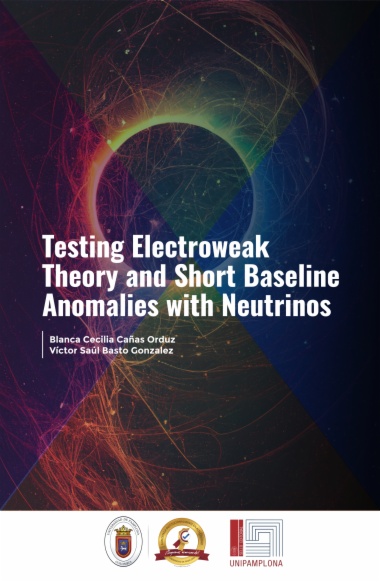Reading through this book, the reader will learn the extraordinary history of one of the fundamental particles that make up our universe: the neutrino.
- Cover
- Copyright page
- Title page
- Table of Contents
- List of Tables
- List of Figures
- Preface
- Introduction
- 1. The Electroweak Standard Model
- 1.1 The Electroweak Standard Model Lagrangian
- 1.2 Electroweak Interactions
- 1.3 The Higgs Mechanism
- 1.4 Fermion Masses and Mixing
- 2. Electroweak Physics with Neutrino Electron Scattering
- 2.1 Motivation
- 2.2 The Weak-Mixing Angle
- 2.3 Neutrino Electron Scattering at Low Energies
- 2.3.1 Electroweak Radiative Corrections
- 2.4 Neutrino Data Analysis
- 2.4.1 Reactor Data
- 2.4.2 Accelerator Data
- 2.5 Limits on the Weak-Mixing Angle
- 2.5.1 From Reactor Experiments
- 2.5.2 From Accelerator Experiments
- 3. Neutrino Mass, Mixing and Oscillations
- 3.1 Massive Neutrinos
- 3.1.1 Dirac Mass
- 3.1.2 Majorana Mass
- 3.2 Neutrinos Oscillations
- 3.3 Indications of Neutrinos Oscillations
- 3.3.1 Solar Neutrino Experiments
- 3.3.2 Atmospheric Neutrino Experiments
- 3.3.3 Reactor Neutrinos Experiments
- 3.4 Global Fit Results for Neutrino Oscillation Parameters
- 4. Beyond the three neutrino framework
- 4.1 Motivation
- 4.2 The 3+1 Mixing Scheme
- 4.3 The Gallium Anomaly
- 4.3.1 Statistical Analysis of the Gallium Anomaly
- 4.3.2 Statistical Analysis of the Antineutrino-Electron Scattering Measurements
- 4.3.3 Gallium Anomaly and Antineutrino-Electron Scattering Data
- 4.4 The Reactor Antineutrino Anomaly
- 4.4.1 Statistical Analysis of Reactor Neutrino Data
- 4.5 Limits on the Oscillation Parameter for Reactor Anomaly
- 4.6 Electron Neutrino Appearance Anomalies
- 4.6.1 The LSND Anomaly
- 4.6.2 MiniBooNE Low-Energy Excess (LEE)
- A. Radiative Corrections to Neutrino-Electron Scattering
- B. Statistical Analysis
- References

